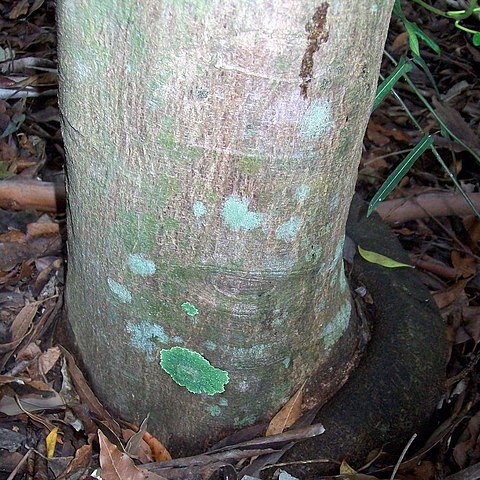A medium sized tree. It grows 10-20 m high and spreads 3-8 m wide. It has a dense dark green crown. The trunk of mature trees often has patches of corky tissue. The young shoots have short hairs. The leaves have 3 leaflets. The leaf stalks are 2-3 cm long and they have raised corky bands. The leaflets are 5-9 cm long by 1-3 cm wide. The leaflets do not have stalks. The leaflets are dark green on the top surface and paler green underneath. The flowers are 1.2 cm across and yellow or white. They are hairy and sweetly scented. The flower stalks are 1-2 cm long. The fruit is 2-2.5 cm long by 101.2 cm wide. They are rounded and fleshy. The fruit taper towards a blunt point. They are creamy yellow. The fruit are edible.

